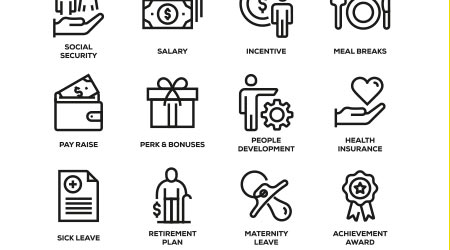Simplified Employee Pension (Sep) Plan

Simplified Employee Pension (Sep) Plan
As its name implies, this is the simplest type of retirement plan available. A SEP, which is essentially an IRA disguised as a simplified IRA, allows you to make a fixed amount of contributions each year. There is very little paperwork and no obligation to make a contribution every year. And regardless of the name, you don't need employees to set one up.
Employers are employees. Employees do not make any contributions to SEPS. The entire cost of SEPS must be paid by employers. Any contribution you make for yourself must also go to all eligible employees. The maximum contribution is 25 percent of an employee's compensation (up to a maximum of $200,000) or $40,000, whichever is less.
Retirement Accounts
Some companies offer a 100% match up to a limit. Others, however, may not be eligible for Safe Harbor and will contribute to an 401k.
On the opposite end of the spectrum, some for-profit companies choose to only contribute to retirement through profit sharing. At the end of each quarter (or perhaps every 6 months), employees enrolled in the profit sharing program receive a letter indicating a contribution amount to their account. This could be more valuable than a matching or smaller program depending on how much the employee shares. However, it is up to you to decide how to structure these programs.

Legal Matters
Complications quickly arise as soon as business begins offering benefits, however. That's because key benefits such as health insurance and retirement plans fall under government scrutiny, and "it is very easy to make mistakes in setting up a benefits plan," says Kathleen Meagher, an attorney specializing in benefits at Chamber of Commerce Group Plan Insurance.
Don't be surprised if nobody notices. An audit by the IRS will reveal to you that your activities are not in compliance with regulations. The U.S. Department of Labor can also perform audits, as it has increased its audit activity. A mistake can cost you dearly, regardless of how it is done. Meagher states that retroactively you can lose all tax benefits and can be subject to penalties.
What is the biggest error? The biggest mistake? Examples range from exclusions of part-timers to failing to extend benefits to clerical and custodial staff. A rule of thumb is that if one employee gets a tax-advantaged benefit--meaning one paid for with pretax dollars--the same benefit must be extended to everyone. There are loopholes that may allow you to exclude some workers, but don't even think about trying this without expert advice.
Such complexities mean its good advice never to go this route alone. While you can save money by conducting preliminary research on your own, it is a good idea to consult a lawyer before creating any benefit plan. A $1,000 upfront investment could help you save money in the long-term by helping to avoid costly potholes.
Hr Analytics Resource Library
Download a collection of some of the best HR Analytics resources we've come across.
Certain employee benefits may be country-specific. For example, in the US, employees receive health insurance as a major component of their employee benefits package. In France, however, workers get vouchers to eat out every day.
Human resource best practices include providing fair and performance-based pay. Compensation and benefits go together, with the former covering your employees' salary. Our complete guide to Compensation and Benefits provides a detailed article about this important element of Human Resource Management.